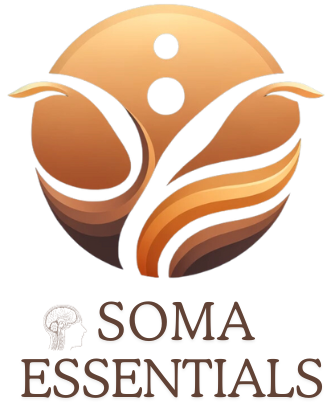Sensory Awareness Exercises: Connecting Mind and Body for Improved Well-being
Somatic education focuses on the mind-body connection, recognizing that our physical and mental states are deeply intertwined. In today’s fast-paced world, it is easy to become disconnected from our bodies and lose awareness of our senses. This can lead to stress, tension, and overall feelings of unwellness. That’s where sensory awareness exercises come in. These practices aim to reconnect us with our bodies, sharpening our senses and improving our overall well-being. In this article, we will explore the benefits of incorporating sensory awareness exercises into your daily routine, and how they can help you achieve a greater sense of balance and harmony in your life. Whether you’re new to somatic education or looking to deepen your practice, these exercises are accessible to everyone and can be easily incorporated into your daily life. So let’s dive in and discover how these simple yet powerful exercises can help you connect your mind and body for improved well-being.
Firstly, let’s understand what somatic education is all about. Somatic education is a holistic approach to learning and healing that focuses on the connection between the mind and body. It involves a range of exercises, techniques, and practices that aim to improve our overall physical, emotional, and mental well-being. One of the main principles of somatic education is that the body holds the key to our inner wisdom and healing. By becoming more aware of our body sensations, movements, and patterns, we can tap into this wisdom and promote self-discovery.
Next, we will delve into the topic of somatic therapy. Somatic therapy is a type of talk therapy that uses body-centered techniques to address emotional and psychological issues. It focuses on helping individuals become more aware of their bodily sensations, emotions, and thought patterns to promote healing from within. Some common techniques used in somatic therapy include body scanning, breathing exercises, and mindful movement.
Now, let’s move on to sensory awareness exercises. These exercises are designed to increase our ability to perceive and interpret sensory information from our environment. They can help us become more present and grounded, and ultimately, improve our mind-body connection. Some examples of sensory awareness exercises include body scans, mindful walking, and body-mind journaling.
It’s also important to mention the role of somatic psychology in somatic education. Somatic psychology is a branch of psychology that focuses on the mind-body connection and how it affects our overall well-being. It uses techniques and theories from somatic education to help individuals deepen their understanding of themselves and promote self-discovery.
To further enhance your understanding of somatic education, let’s explore the principles of somatic movement. Somatic movement is based on the idea that our body is designed to move in specific ways. By practicing mindful movement and exploring different movement patterns, we can improve our body awareness and release tension and stress in our muscles and joints. Some popular somatic movement practices include yoga, tai chi, and Feldenkrais Method.
So why should you incorporate somatic education into your daily routine? The benefits are numerous. Not only can it help with improving your mind-body connection and overall well-being, but it can also reduce stress and anxiety, enhance physical performance, and promote self-awareness and self-discovery. Whether you’re dealing with chronic pain, emotional trauma, or simply want to deepen your connection with yourself, somatic education can be a powerful tool for transformation.
In conclusion, somatic education is a holistic approach to learning and healing that focuses on the mind-body connection. Through sensory awareness exercises, somatic therapy, and somatic movement practices, we can promote self-discovery, improve our physical and emotional well-being, and deepen our understanding of ourselves. We hope this article has provided you with valuable insights into the world of somatic education.
The Principles of Somatic Education
Somatic education is a holistic approach to improving physical and emotional well-being by focusing on the mind-body connection. It is based on the principle that our thoughts, emotions, and physical sensations are interconnected and influence each other.
This approach emphasizes the importance of listening to our bodies and being present in the moment. By becoming more aware of our bodies, we can better understand and manage our emotions, improve our posture and movement patterns, and ultimately enhance our overall well-being.
Somatic Therapy: Healing from Within
Somatic therapy is a form of body-centered therapy that focuses on the connection between the mind and body. It aims to help individuals heal from within by addressing physical and emotional issues through the body.
There are various techniques used in somatic therapy, such as breathwork, movement, and touch. These techniques can help individuals release tension, trauma, and negative emotions stored in the body. By bringing awareness to these sensations and releasing them, individuals can experience a sense of relief and improved well-being.
One of the main benefits of somatic therapy is its ability to tap into the body’s natural healing abilities. By connecting with the body and its sensations, individuals can unlock their own potential for healing and self-discovery.
Additionally, somatic therapy can also improve body awareness and help individuals develop a deeper understanding of their physical and emotional needs. This can lead to improved self-care practices and better overall health.
Overall, somatic therapy offers a holistic approach to healing that can have profound effects on an individual’s well-being. By addressing both the mind and body, it allows for a deeper level of healing and personal growth.
Somatic Psychology: Deepening Our Understanding of Ourselves
Somatic psychology is a branch of psychology that focuses on the connection between the mind and the body. It delves into how our emotions, thoughts, and experiences are manifested in our physical bodies. This field of study recognizes that our bodies hold valuable information and can serve as a powerful tool for self-discovery and healing.
Through somatic education, we can deepen our understanding of ourselves by learning to pay attention to our body’s sensations, movements, and postures. By developing this awareness, we can gain insights into our past traumas, fears, and patterns of behavior that may be hindering our well-being.
One of the key principles of somatic psychology is the recognition of the mind-body connection. This means that our thoughts and emotions have a direct impact on our physical bodies. For example, when we experience stress or anxiety, our bodies may respond with tense muscles, shallow breathing, or other physical symptoms.
By practicing sensory awareness exercises and somatic movement, we can learn to release tension and let go of negative patterns in both our minds and bodies. This can lead to improved overall well-being and a greater sense of self-awareness.
Somatic Movement: Enhancing Body Awareness and Releasing Tension
Somatic movement, also known as somatic education, is a practice that focuses on connecting the mind and body through movement. It involves becoming more aware of the sensations in our body and learning how to release tension and stress through specific exercises.
One of the key principles of somatic movement is body awareness. This is the ability to tune into the signals that our body sends us, such as tension, pain, or discomfort, and respond accordingly. By enhancing our body awareness, we can better understand our physical and emotional needs and make positive changes to improve our well-being.
Somatic movement practices can include a variety of exercises, such as gentle stretches, slow and mindful movements, and breathing techniques. These exercises can help release tension in the muscles, improve flexibility and mobility, and promote relaxation.
In addition to physical benefits, somatic movement can also have a positive impact on our mental and emotional state. By focusing on our body’s sensations and letting go of tension, we can reduce stress, anxiety, and other negative emotions.
Overall, incorporating somatic movement into our daily routine can lead to improved body awareness, reduced tension and stress, and enhanced well-being. So why not give it a try? Your mind and body will thank you for it.
Sensory Awareness Exercises: Cultivating Mindfulness and Presence
Sensory awareness exercises are a powerful tool for cultivating mindfulness and presence in our everyday lives. These exercises involve paying attention to our senses, such as touch, sight, smell, and sound, and using them as a gateway to connect with our body and mind. By focusing on our senses, we can become more present in the moment and develop a deeper understanding of ourselves.
One of the practical applications of sensory awareness exercises is in somatic education practices. Somatic education is a holistic approach to movement and therapy that focuses on the mind-body connection. By incorporating sensory awareness exercises into somatic education, we can improve our body awareness and enhance our overall well-being.
But the benefits of sensory awareness exercises go beyond just physical well-being. They can also help us cultivate mental clarity, reduce stress and anxiety, and increase our ability to cope with difficult emotions. By paying attention to our senses and becoming more aware of our surroundings, we can learn to live in the present moment and let go of distractions and worries.
Incorporating sensory awareness exercises into our daily routine can have a profound impact on our lives. Not only can they help us develop a stronger mind-body connection, but they can also promote overall well-being and improve our quality of life. So why not give them a try and see the positive effects for yourself?
We hope this article has shed light on the importance of somatic education and its various practices. Incorporating somatic exercises into your daily routine can have numerous benefits for your mind, body, and overall well-being. Whether you’re looking to improve your physical health, reduce stress and anxiety, or deepen your self-awareness, somatic education can be a powerful tool for transformation.

